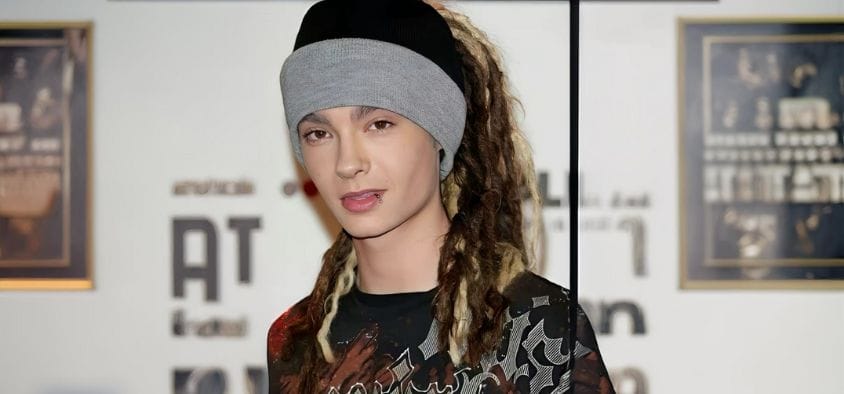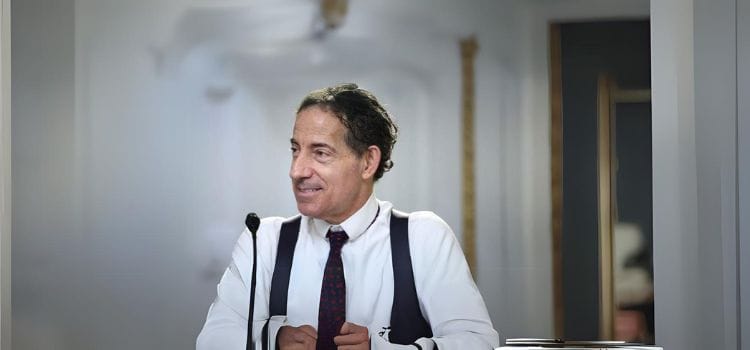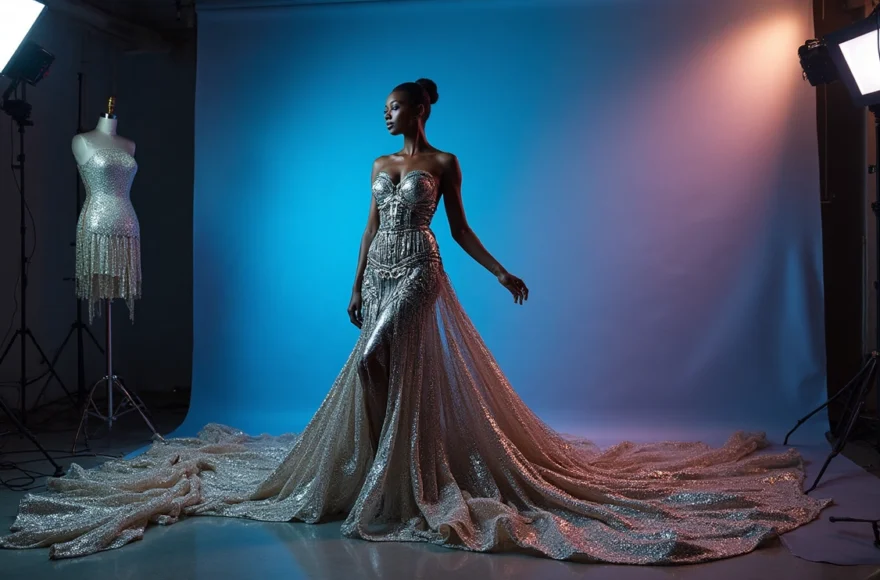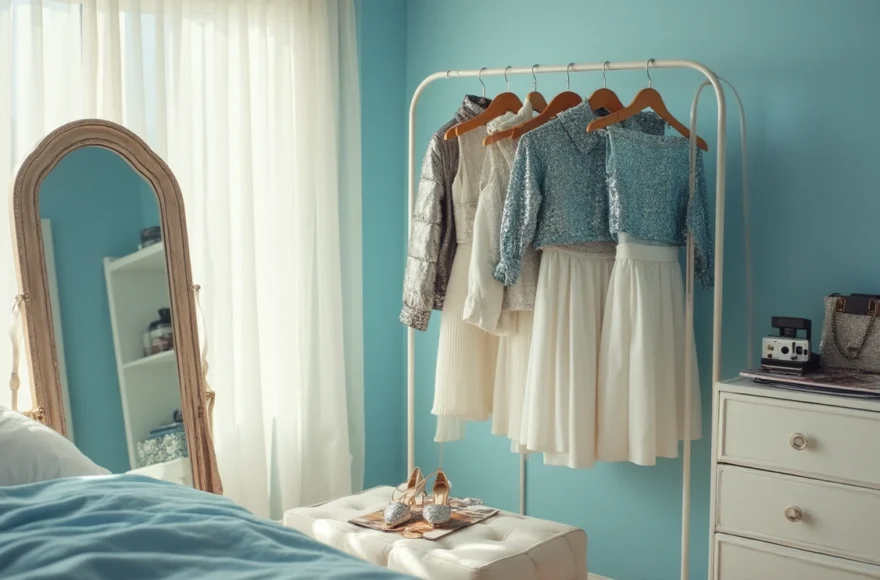The Real Reason Why Penelope Wears Yellow in Bridgerton (It’s Not What You Think)
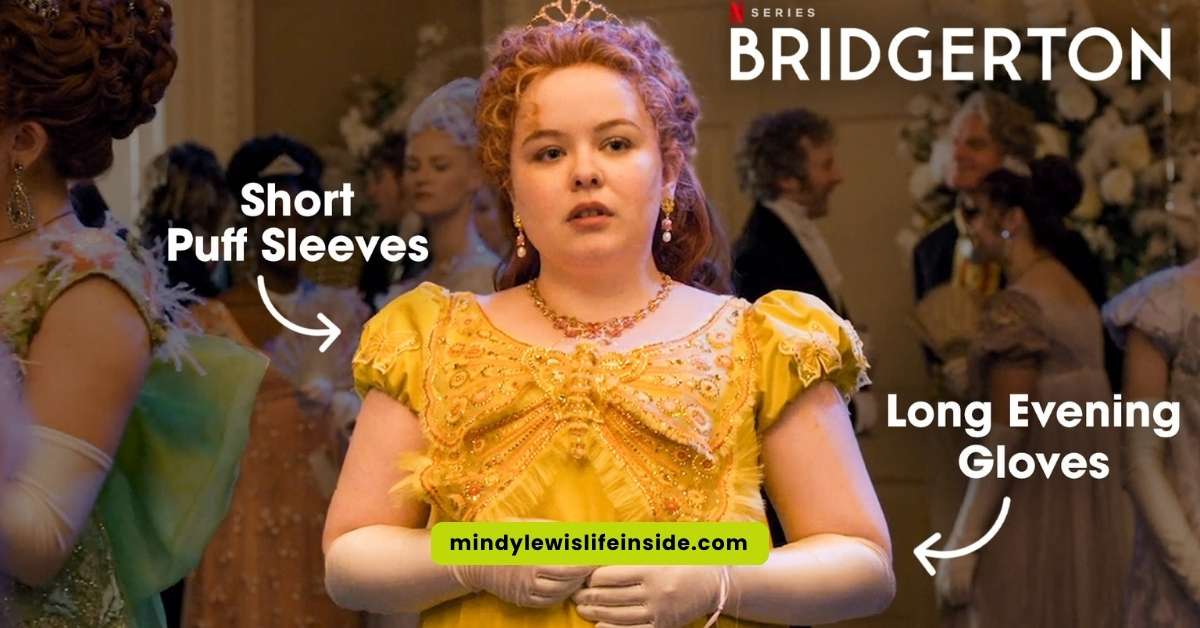
As an Amazon Associate, I earn from qualifying purchases
Have you ever wondered why Penelope Featherington always wears yellow in Bridgerton? I was initially convinced it was just another way her mother tortured her with unflattering fashion choices! In reality, there’s a much deeper story behind those sunshine-colored gowns.
When I first started watching the show, I assumed yellow was chosen to make Penelope stand out for all the wrong reasons. Actually, yellow was the Regency era’s most fashionable color! Yes, despite Penelope often bemoaning her yellow clothes, those bright dresses were considered quite stylish during that time period.
The brilliant Bridgerton costume designers didn’t just randomly select colors – they created a complex visual language where each family has their own distinctive palette and meaning.
What makes Penelope’s yellow wardrobe particularly fascinating is how it reflects her character’s duality. Yellow isn’t just about fashion – it symbolizes both deceit and jealousy while also representing new life, intellect, and enlightenment.
This perfectly captures Penelope’s secret double life as Lady Whistledown! The color simultaneously highlights her intelligence and her deception – I can’t think of a more perfect visual metaphor for such a complex character.
I’m excited to share everything I’ve discovered about the real meaning behind Penelope’s signature color, how it connects to the Bridgerton family’s iconic Wedgewood blue, and the significant wardrobe evolution we witness throughout the series.
Trust me – once you understand the true purpose of those yellow dresses, you’ll never look at Penelope’s outfits the same way again!
The Historical and Social Meaning of Yellow in Bridgerton
Image Source: Popsugar
Yellow isn’t just a random color choice for the Featherington family—it carries rich historical significance that adds depth to the storytelling in Bridgerton. Throughout the Regency period, yellow was considered one of the most fashionable colors of the era, making its appearance in the wardrobes of society’s elite.
Jonquil, a daffodil-inspired yellow, reigned supreme as the go-to shade during this time. First referenced in fashion around 1807, it quickly became au courant by 1810. This vibrant hue was so popular that fashion magazines eventually tried rebranding it under different names by the late 1820s because it had become ubiquitous.
Alongside jonquil, other fashionable yellow shades included primrose (especially favored by young women), straw (a light golden yellow popular for gloves and shoes), and lemon (versatile for both day and evening wear). These varied tones gave the color remarkable versatility in Regency wardrobes.
Interestingly, yellow carried complex symbolic meanings. On one hand, it represented joy, optimism, and intellect—qualities that reflected positivity and brightness. Yet historically, yellow simultaneously carried darker associations with envy, deceit, and other “malignant passions”. Shakespeare even referenced this connection, writing “I will possess him with yellowness” when referring to jealousy.
The bright, attention-grabbing yellows worn by the Featherington family create a deliberate contrast with the elegant, pale-colored gowns of the high-class Bridgertons. This stark visual difference isn’t merely aesthetic—it tells a story about social standing. The Featheringtons represent the “nouveau riche” of the ton, obsessed with appearances and trying too hard to fit in.
Through these costume choices, Bridgerton creates a visual language where the Featheringtons’ bold yellows immediately signal their social position.
The historical sins in their wardrobe—overly bright colors that might appear almost cheap—become intentional creative decisions that reveal character. Their fashion choices tell us everything about their desperate desire for acceptance and their outsider status within London’s high society.
Symbolism Behind Penelope’s Yellow Dresses
Image Source: Popsugar
The brilliant yellow of Penelope’s wardrobe serves as one of the most clever visual metaphors in the entire series. Looking beyond mere fashion choices, this specific color forms a sophisticated character device that reveals Penelope’s complex inner world.
What makes yellow particularly perfect for Penelope is its inherent duality. Throughout history, yellow has simultaneously represented deception and intellect—a contradiction that perfectly mirrors her secret double life as Lady Whistledown.
Ellen Mirojnick, Bridgerton’s first season costume designer, deliberately chose yellow because it symbolizes deceit, providing a subtle visual clue about Penelope’s hidden identity.
Furthermore, this connection to dishonesty appears elsewhere in the series: notably when Marina Thompson wears yellow while concealing her pregnancy and deceiving Colin about paternity—interestingly, one of the few occasions when Penelope herself isn’t dressed in yellow.
Yet yellow equally represents enlightenment and intellect—qualities that define Lady Whistledown’s sharp observations of society. The color effectively highlights Penelope’s remarkable intelligence, hidden beneath her seemingly naive exterior.
This duality creates a fascinating visual paradox: the very color that makes her stand out at social events simultaneously helps her hide in plain sight.
Yellow additionally symbolizes jealousy and cowardice, reflecting Penelope’s unrequited feelings for Colin and her initial inability to express them. The bright hue ironically emphasizes her invisibility within the ton’s social hierarchy—she’s simultaneously visible and overlooked.
As the series progresses, Penelope’s relationship with yellow evolves. In Season 2, she openly expresses weariness with the color, telling Edwina Sharma, “I have grown weary of the color.”
This statement marks a turning point in her character development as she begins recognizing her own agency. Consequently, her wardrobe starts incorporating pinks and mauves, signaling her growing maturity.
Season 3 completes this transformation with her declaration: “I do not wish to see a citrus color ever again”—a powerful rejection of the identity imposed upon her, marking her determination to forge her own path.
Penelope’s Wardrobe Evolution Across Seasons
Image Source: Business Insider
Penelope’s relationship with her sunshine-colored wardrobe transforms dramatically throughout the series, reflecting her journey from wallflower to confident woman. From the very first episode, we see her mother forcing those bright yellows upon her, creating an identity Penelope neither chose nor embraced.
Throughout Season 1, the yellows serve their narrative purpose—making her simultaneously visible yet overlooked. The costume designers deliberately dressed her in unflattering silhouettes and harsh shades that didn’t complement her complexion, visually reinforcing her outsider status within the ton.
Season 2 marks the beginning of her sartorial rebellion. When Edwina compliments her yellow gown, Penelope confesses, “I have grown weary of the color.” This admission signals her first step toward claiming her own identity.
Sophie Canale, the season’s costume designer, begins incorporating subtle pinks and mauves into Penelope’s wardrobe—softer colors that hint at her romantic aspirations and growing maturity.
By Season 3, the transformation becomes complete with Penelope’s declaration: “I do not wish to see a citrus color ever again.” This powerful rejection coincides with her pursuit of Colin and her evolution as Lady Whistledown. Her wardrobe shifts dramatically toward rich greens and deep blues—colors symbolizing growth, renewal, and her deepening connection to the Bridgerton family.
The costume team, led by John Glaser for Season 3, drew inspiration from Old Hollywood icons like Marilyn Monroe and Audrey Hepburn.
The new wardrobe features fitted tailoring, sheer fabrics, and designs that highlight rather than hide her figure. Indeed, every stitch and color choice tells the story of Penelope’s transformation from observer to participant in her own life.
Her final wedding dress represents the culmination of this journey—a sophisticated garment that celebrates rather than conceals, embodying her newfound confidence and self-acceptance.
The color evolution from yellow to green and blue visually underscores her most profound character development—choosing who she wants to be rather than accepting what others have chosen for her.
Conclusion
Throughout Bridgerton, Penelope’s yellow wardrobe tells a story far richer than most viewers initially realize. What appeared at first glance as merely unflattering fashion choices forced upon her actually represents one of television’s most sophisticated visual storytelling devices.
Her sunshine-colored gowns simultaneously reflect historical accuracy and serve as brilliant character development.
The genius behind Penelope’s yellow dresses lies in their perfect duality. Essentially, they embody both her intelligence as Lady Whistledown and her deception in maintaining this secret identity. The bright hues that make her stand out at social gatherings paradoxically help her hide in plain sight – visible yet invisible within the ton’s hierarchy.
Undoubtedly, the most fascinating aspect of Penelope’s relationship with yellow comes through her gradual rejection of it. Her journey from reluctantly accepting her mother’s choices to declaring “I do not wish to see a citrus color ever again” mirrors her evolution from wallflower to confident woman.
When she transitions to greens and blues in Season 3, we witness not just a wardrobe change but a profound character transformation.
Despite her initial discomfort with yellow, the color choice was historically accurate for the Regency period. Jonquil, primrose, and lemon yellows were indeed fashionable during this era.
Therefore, the irony deepens – Penelope feels unfashionable while wearing what was actually considered stylish, highlighting her outsider status despite her family’s desperate attempts to fit in.
Above all, Penelope’s yellow-to-green-to-blue journey represents something we can all relate to – the struggle between the identity others impose on us and the person we truly want to become. Her wardrobe evolution symbolizes her growing self-determination and willingness to define herself rather than accept others’ definitions.
Next time you watch Bridgerton, pay closer attention to those yellow dresses. You’ll see them transform from symbols of confinement to launchpads for self-discovery – a visual reminder that sometimes our most significant personal revolutions begin with something as simple as choosing what we wear.
Key Takeaways
Penelope’s yellow wardrobe in Bridgerton isn’t just poor fashion choices—it’s a sophisticated visual storytelling device that reveals her complex character development and secret identity.
• Yellow was historically fashionable in the Regency era, making Penelope’s complaints about her “unflattering” dresses deeply ironic
• The color symbolizes both deception and intellect, perfectly reflecting Penelope’s dual identity as Lady Whistledown • Her wardrobe evolution from yellow to green/blue mirrors her transformation from wallflower to confident woman
• The bright yellows make her simultaneously visible yet overlooked, serving as perfect camouflage for her secret activities
• Penelope’s rejection of yellow in Season 3 represents her choosing self-determination over imposed identity
The costume designers created a brilliant paradox: the very color that seems to disadvantage Penelope actually enables her greatest power—hiding her true identity as the ton’s most influential gossip columnist while showcasing her sharp intelligence.
FAQs
Why does Penelope wear yellow in Bridgerton?
Penelope wears yellow as it was a fashionable color during the Regency era. It also serves as a visual storytelling device, symbolizing both her intelligence and her secret identity as Lady Whistledown.
What is the significance of the yellow dresses in Bridgerton?
The yellow dresses represent duality in Penelope’s character. They symbolize deception, relating to her secret alter ego, while also highlighting her intellect and hidden brilliance. The bright color makes her stand out, yet paradoxically helps her blend in.
How does Penelope’s wardrobe change throughout the series?
Penelope’s wardrobe evolves from predominantly yellow in earlier seasons to incorporating more greens and blues in later seasons. This change reflects her character development and growing self-confidence.
Why was yellow considered an unflattering color for Penelope?
Despite yellow being fashionable during the Regency era, it was considered unflattering for Penelope due to her complexion and the specific shades chosen by her mother. This contributed to her feeling out of place in society.
How does Penelope’s attitude towards her yellow dresses change?
Initially, Penelope reluctantly accepts the yellow dresses chosen by her mother. As the series progresses, she expresses weariness with the color and eventually rejects it entirely, symbolizing her journey towards self-determination and confidence.
As an Amazon Associate, I earn from qualifying purchases




